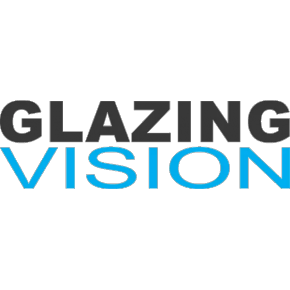
Glazing Vision clears up U-value confusion
Glazing Vision discusses the importance of understanding U-values as a measure of thermal transmittance through building fabric from warm to cold.
There is the potential for confusion around U-values for roof lights since, like g-values, it is common to see both whole unit and centre pane values used.
Beware of centre pane U-values
Centre pane U-values address the thermal performance of the glass only. They appear lower than whole-unit values because the cold bridging effect of the spacer and edge seal are not accounted for. Unfortunately, this means some manufacturers rely on quoting centre pane U-values when they should offer whole-unit U-values.
Specifiers can find themselves misled if a centre pane value is made to appear as though it is a better performing product – a tactic which is not in compliance with building regulations. However, centre pane values are useful for comparing one glass against another when being used in the same frame, as well as in conservation projects where traditional frame designs offer no meaningful thermal performance.
Low-e coatings impact on glass performance
In addition to treatments for solar control and reflectivity, there are also low emissivity (low-e) coatings that impact on the loss of heat from inside the building by reflecting longwave radiation back in.
A material’s emissivity determines the amount of thermal radiation emitted from its surface. Low-e surfaces emit less thermal radiation, and glazing units benefit from this through the application of a microscopic coating of tin, silver or zinc to certain faces of the glass panes in the unit.
In contrast to the short wave radiation from the sun that heats the building interior, the heat energy transferring back through the building fabric, from warm inside to cold outside, is longwave radiation. Glass with the low-e coating reflects longwave radiation, effectively keeping more heat energy in the building.
What are ‘hard’ and ‘soft’ coatings?
There are two types of coating: hard and soft. Hard coat is applied while the glass is still molten, whereas soft coat is applied later in the process. Hard coat is more durable, as its name suggests. Soft coat remains delicate, is only applied to the sides of panes facing into a sealed airspace, and has a lower emissivity than hard coat.
The difference in emissivity between the two means argon filled glazing with a hard coat treatment will typically offer a centre pane U-value of 1.4 W/m²K, while a soft coat treatment will see that improved to 1.1 W/m²K. It’s a meaningful distinction, yet some manufacturers will simply claim their glazing to be “low-e”. Making a hard coat treatment sound like a similar benefit to soft coat is another reason for specifiers to be clear about the features of the products they’re selecting.
Selecting glass that provides high light transmittance, effective solar control and excellent thermal performance is crucial. The term selectivity is used to describe this balanced combination of performance characteristics, where a higher selectivity is seen as the optimum combination.
Contact:
Glazing Vision Ltd,
Sawmills Road,
Diss,
IP22 4RG
01379 658 300
sales@glazingvision.co.uk
Visit the Glazing Vision website
Visit Supplier's page
Latest news

28th March 2025
Ideal Heating Commercial announces 10-year warranty on Evomax 2 boiler
Evomax 2, the UK’s number one selling commercial wall-mounted boiler from Ideal Heating Commercial, is now available with a 10-year warranty.
Posted in Articles, Building Industry News, Building Products & Structures, Building Regulations & Accreditations, Building Services, Facility Management & Building Services, Heating Systems, Controls and Management, Heating, Ventilation and Air Conditioning - HVAC, Innovations & New Products, Pipes, Pipes & Fittings, Plumbing, Retrofit & Renovation, Sustainability & Energy Efficiency, Videos
28th March 2025
FLIR Si1-LD Acoustic Imaging Camera for Compressed Air Leak Detection
FLIR, a Teledyne Technologies company, introduces the Si1-LD, an industrial acoustic imaging camera that brings faster and more accurate compressed air leak detection to those operating on a modest condition monitoring budget.
Posted in Acoustics, Noise & Vibration Control, Articles, Building Industry News, Building Products & Structures, Building Services, Facility Management & Building Services, Information Technology, Innovations & New Products, Retrofit & Renovation, Sustainability & Energy Efficiency, Thermal Imaging and Monitors
28th March 2025
LIFTEX 2025 Seminar programme announced
Registration has opened for LIFTEX 2025. Now in its 37th year, LIFTEX 2025 is the UK’s only dedicated exhibition for the lift, escalator and access industry and takes place only once every three years.
Posted in Access Control & Door Entry Systems, Accessibility, Articles, Building Industry Events, Building Industry News, Building Products & Structures, Building Regulations & Accreditations, Building Services, Exhibitions and Conferences, Facility Management & Building Services, Health & Safety, Retrofit & Renovation, Security and Fire Protection, Seminars
28th March 2025
MCRMA welcomes ArcelorMittal UK to membership
A UK division of the global steelmaking business ArcelorMittal has become the latest new member of the MCRMA, the industry association representing the metal building envelope sector.
Posted in Articles, Building Associations & Institutes, Building Industry News, Building Products & Structures, Building Systems, Cladding, Facades, Posts, Restoration & Refurbishment, Retrofit & Renovation, Roofs, Steel and Structural Frames, Walls
 Sign up:
Sign up: